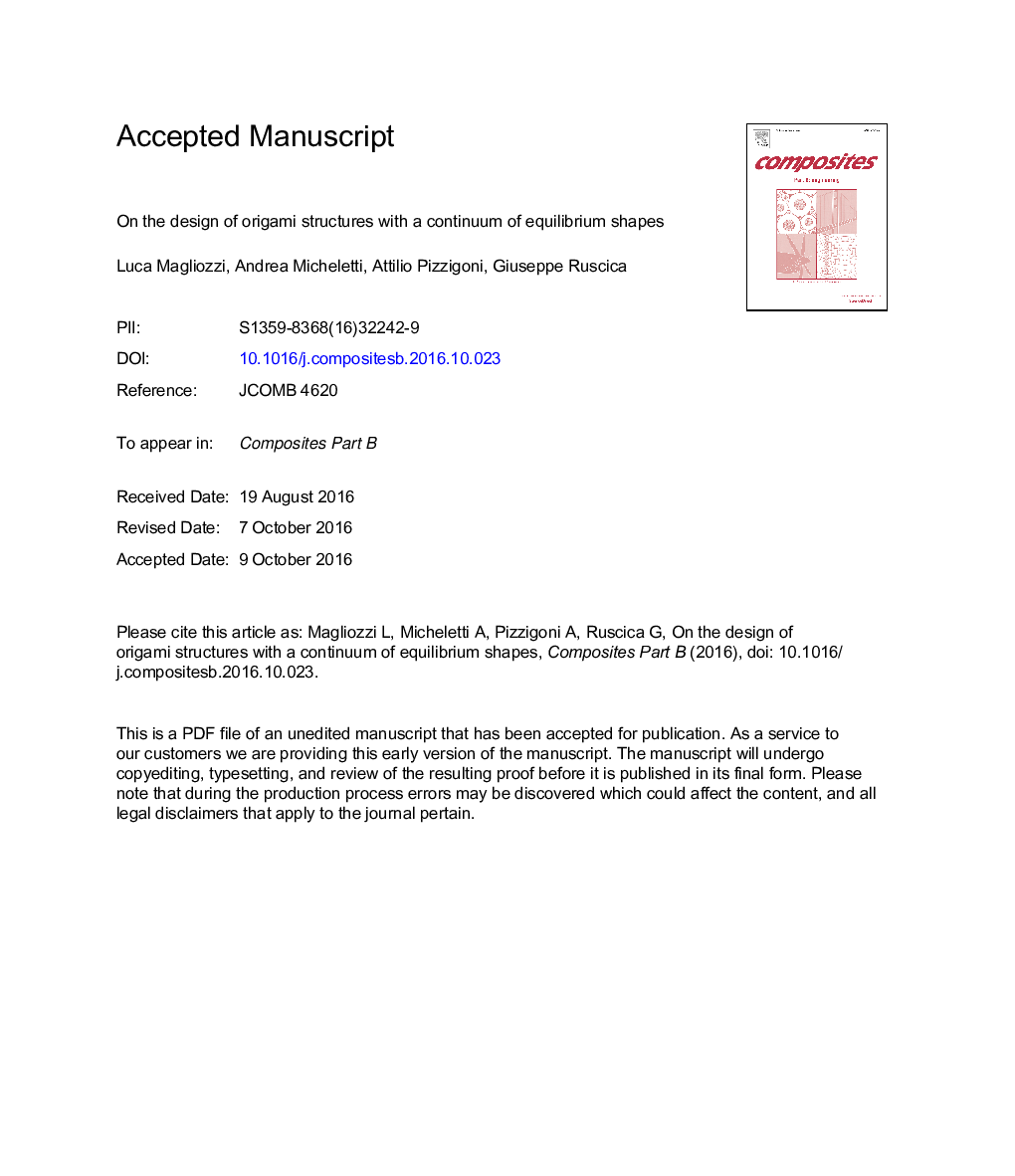| Article ID | Journal | Published Year | Pages | File Type |
|---|---|---|---|---|
| 5021637 | Composites Part B: Engineering | 2017 | 17 Pages |
Abstract
Here we focus on the problem of how to fold/deploy an origami structure. We consider origami tessellations which can pass from one shape to another through a continuum of equilibrium configurations. Among different tessellations, we choose the one invented by Ron Resch. This tessellation features only triangular panels, a property that allows us to simplify the model, and that gives the structure higher stiffness with respect to other types of tessellations. We present two distinct procedures for changing the shape of an origami. In the first one, a certain number of bars is added to the system, to make the structure isostatic and to control, by varying their length, the change of shape. In the second procedure, length changes are assigned only to a minimum number of control elements, while the remaining length changes are determined by imposing a sufficient and minimal number of constraints. Such constraints can impose symmetry conditions and/or particular nodal trajectories. We found that often it is not possible to arbitrarily control all degrees of freedom of Resch's origami structures, since a halt in the folding/deployment path can occur, with the structure locked in a singular configuration. This problem is sidestepped by assigning fewer kinematic constraints and by using the pseudo-inverse solution of the system of kinematic-compatibility equations. Our approach is general enough to be applied to origami structures at different scales, and of different patterns.
Related Topics
Physical Sciences and Engineering
Engineering
Engineering (General)
Authors
Luca Magliozzi, Andrea Micheletti, Attilio Pizzigoni, Giuseppe Ruscica,
